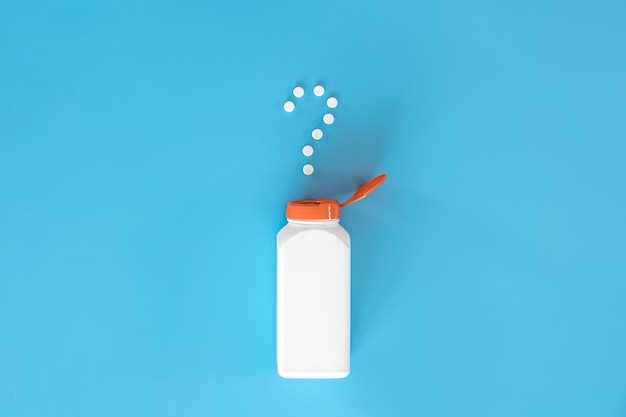
If you’re wondering how long you should take metronidazole gel, look no further. This powerful medication is a topical treatment for bacterial infections that can provide fast relief. Whether you’re dealing with acne or rosacea, metronidazole gel is a proven solution that can help clear up your skin.
Fast-Acting Formula: Metronidazole gel works quickly to combat bacteria and reduce inflammation, so you can start seeing results in as little as a few weeks.
Get clear, healthy skin with metronidazole gel – try it today!
Understanding the gel

Metronidazole gel is a topical medication that contains the active ingredient metronidazole. It is commonly used to treat certain skin conditions such as rosacea, a common chronic skin condition that causes redness and visible blood vessels in the face. Metronidazole works by reducing inflammation and killing bacteria that contribute to the symptoms of rosacea.
The gel is typically applied directly to the affected areas of the skin, where it is absorbed and begins to work. It is important to follow your healthcare provider’s instructions on how to use the gel properly to achieve the best results. Some people may experience a mild burning or stinging sensation when first applying the gel, but this usually subsides after a few minutes.
Metronidazole gel is usually applied once or twice daily, depending on the severity of the condition being treated. It is important to continue using the gel for the full course of treatment, even if your symptoms improve before the treatment is complete. Stopping treatment prematurely can lead to a recurrence of symptoms.
Understanding the gel
Metronidazole gel is a topical medication that belongs to the nitroimidazole class of antibiotics. It is commonly used to treat bacterial infections of the skin, such as rosacea and acne. The gel form allows for easy application and absorption into the skin, targeting the site of infection directly.
How does metronidazole gel work?
Metronidazole works by disrupting the DNA of bacteria, leading to their death. It has antibacterial and anti-inflammatory properties, making it effective in reducing redness, swelling, and inflammation associated with skin infections. When applied topically, the gel penetrates the skin layers to reach the affected area, providing targeted treatment.
Usage and Application

Metronidazole gel is typically used for the treatment of inflammatory lesions caused by rosacea, a common skin condition that causes redness and visible blood vessels in the face. This gel is applied topically to the affected areas of the skin, usually once or twice daily as directed by your healthcare provider.
Before applying the gel, it is important to wash and dry the affected area thoroughly. Then, apply a thin layer of metronidazole gel to the affected skin and gently rub it in until it is absorbed. Avoid getting the gel in your eyes, mouth, or nose. If contact occurs, rinse thoroughly with water.
It is important to follow the instructions provided by your healthcare provider regarding the frequency and duration of treatment with metronidazole gel. Do not apply more than the recommended amount or use it for longer than prescribed, as this can increase the risk of side effects.
If you have any questions or concerns about how to use metronidazole gel, be sure to consult your healthcare provider for guidance and advice.
Usage and application
When using metronidazole gel, it is important to follow the instructions provided by your healthcare provider or pharmacist. Before applying the gel, make sure to wash and dry the affected area thoroughly.
Step 1: Squeeze a small amount of metronidazole gel onto your fingertip.
Step 2: Gently apply the gel to the affected area, spreading it evenly in a thin layer. Avoid getting the gel in your eyes or mouth.
Step 3: Wash your hands after applying the gel to prevent accidental transfer to other areas of the skin or mucous membranes.
Step 4: Follow the recommended dosage and frequency of application as prescribed by your healthcare provider. Do not use more than the recommended amount of gel.
It is important to continue using metronidazole gel for the full course of treatment, even if your symptoms improve before the prescribed duration is complete. If you have any questions or concerns about how to apply metronidazole gel, consult your healthcare provider for further guidance.
How to apply metronidazole gel?
When using metronidazole gel, it is important to follow the instructions provided by your healthcare provider. Here are the general steps for applying the gel:
- Wash your hands before and after applying the gel to prevent the spread of bacteria.
- Clean the affected area with mild soap and water and pat it dry before applying the gel.
- Squeeze a small amount of gel onto your fingertip or applicator provided with the medication.
- Gently apply a thin layer of the gel to the affected area. Avoid getting the gel in your eyes, nose, or mouth.
- Wash your hands again after applying the gel to avoid spreading it to other areas of your body.
- Follow the specific instructions on how often to apply the gel and for how long as directed by your healthcare provider.
It is important to use metronidazole gel exactly as prescribed to achieve the best results and minimize the risk of side effects.
Duration of treatment
How long you should use metronidazole gel depends on the specific condition being treated. Your healthcare provider will provide you with specific instructions on how often and for how long to use the gel. It is important to follow these instructions carefully to ensure the best results.
Typically, metronidazole gel is applied once or twice daily for a certain period of time. The duration of treatment can vary depending on the severity of your condition and how well you respond to the medication. In general, treatment with metronidazole gel may last from several days to a few weeks.
It is important to continue using metronidazole gel for the full course of treatment, even if your symptoms improve before the treatment is complete. Stopping the medication too soon may result in the infection returning or not being fully treated.
If you have any questions about how long you should use metronidazole gel or if you experience any unusual side effects while using the medication, be sure to contact your healthcare provider for further guidance.
Knowing when to stop using metronidazole gel is essential in ensuring the best outcome for your treatment.
Typically, the duration of metronidazole gel treatment is determined by your healthcare provider based on the severity of your condition and your individual response to the medication. It is important to follow your healthcare provider’s instructions regarding how long you should use metronidazole gel.
In general, metronidazole gel is usually applied once or twice daily for a specified period, which can range from a few days to several weeks. It is crucial to complete the full course of treatment even if your symptoms improve before the prescribed duration.
Discontinuing the use of metronidazole gel prematurely may lead to incomplete eradication of the infection, increasing the risk of recurrence or developing resistance to the medication. It is vital to adhere to the recommended duration to ensure the effectiveness of the treatment.
Potential side effects
While metronidazole gel is generally well tolerated, some common side effects may occur. These include:
- Skin irritation, such as redness, itching, or burning
- Dry skin or peeling
- Stinging or tingling sensation
- Unpleasant taste in the mouth
- Nausea or vomiting
It’s important to consult your healthcare provider if you experience any severe or persistent side effects while using metronidazole gel. They can provide guidance on managing these symptoms or adjusting your treatment plan if needed.
